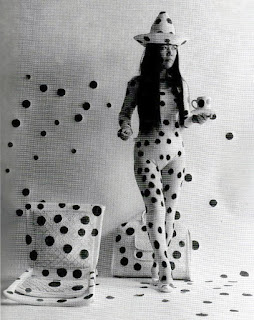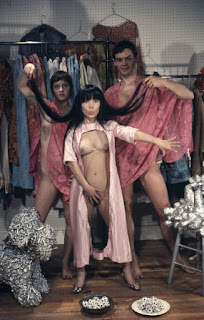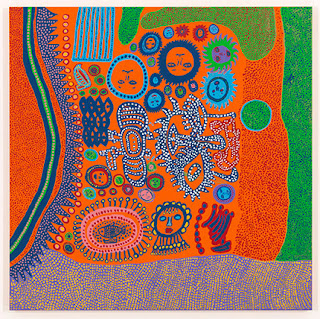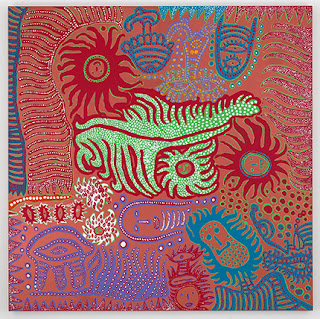Yayoi Kusama is an artist from Japan. Born in 1929 in the small town of Matsumoto. Her paintings already during her lifetime cost millions of dollars.
Her work is known for 2 periods - the period of life in the United States and Japan, after oblivion.
She is known for her performances, vibrant exhibitions, paintings, sculptures, toys and books with prose and poetry.
Yayoi has been suffering from hallucinations and obsessive repetitions since childhood. Observed by a psychiatrist. It seems to her that the world is breaking up into circles. It is this disease that makes genius out of her.
Yayoi Kusama Drawings
Yayoi drew for his life thousands of pictures. The most recognizable are pumpkins.
Yayoi Kusama as a successful businesswoman
Her work is known for 2 periods - the period of life in the United States and Japan, after oblivion.
She is known for her performances, vibrant exhibitions, paintings, sculptures, toys and books with prose and poetry.
Yayoi has been suffering from hallucinations and obsessive repetitions since childhood. Observed by a psychiatrist. It seems to her that the world is breaking up into circles. It is this disease that makes genius out of her.
Period of life in New York.
Fleeing from an authoritarian mother and on the advice of a psychiatrist, Yayoi moved to New York in 1957.
Young Yayoi is very ambitious, vibrant and eccentric. She knows the value of her talent and constantly arranges performances with the participation of naked bodies. At first, in her work there are only peas, but then phalluses appear. They are funny and cute. So she promotes the equality of men and women.
Yayoi loves to pose near her phalluses. Sometimes she is taken to the police, and she creates a pea church and declares herself the high priestess.
Yayoi Kusama Drawings
Yayoi drew for his life thousands of pictures. The most recognizable are pumpkins.
Yayoi Kusama returns to Japan
In 1973, Yayoi ret urned to Japan for health reasons. The Japanese thought that her work was too bold and was forgotten about her. But she began to write books about outsiders and the Japanese liked it.


Yayoi Kusama as a successful businesswoman
Yayoi Kusama is a successful business woman. When she lived in New York, she created the "Fashion Kusama Company" and recently created a collection of clothes with Louis Vuitton.



Yayoi Kusama Museum in Japan
Yayomi Kosama has a museum that is completely dedicated to her.


Modern Yayoi Kusama
For almost 40 years, Yayoi Kusama has been living in a psychiatric clinic. Moreover, she has an office and she does not cease to work and leave a legacy to the world.
You can see the work of another contemporary artist - Anastasiia Djoconda
MAIN






























































No comments:
Post a Comment